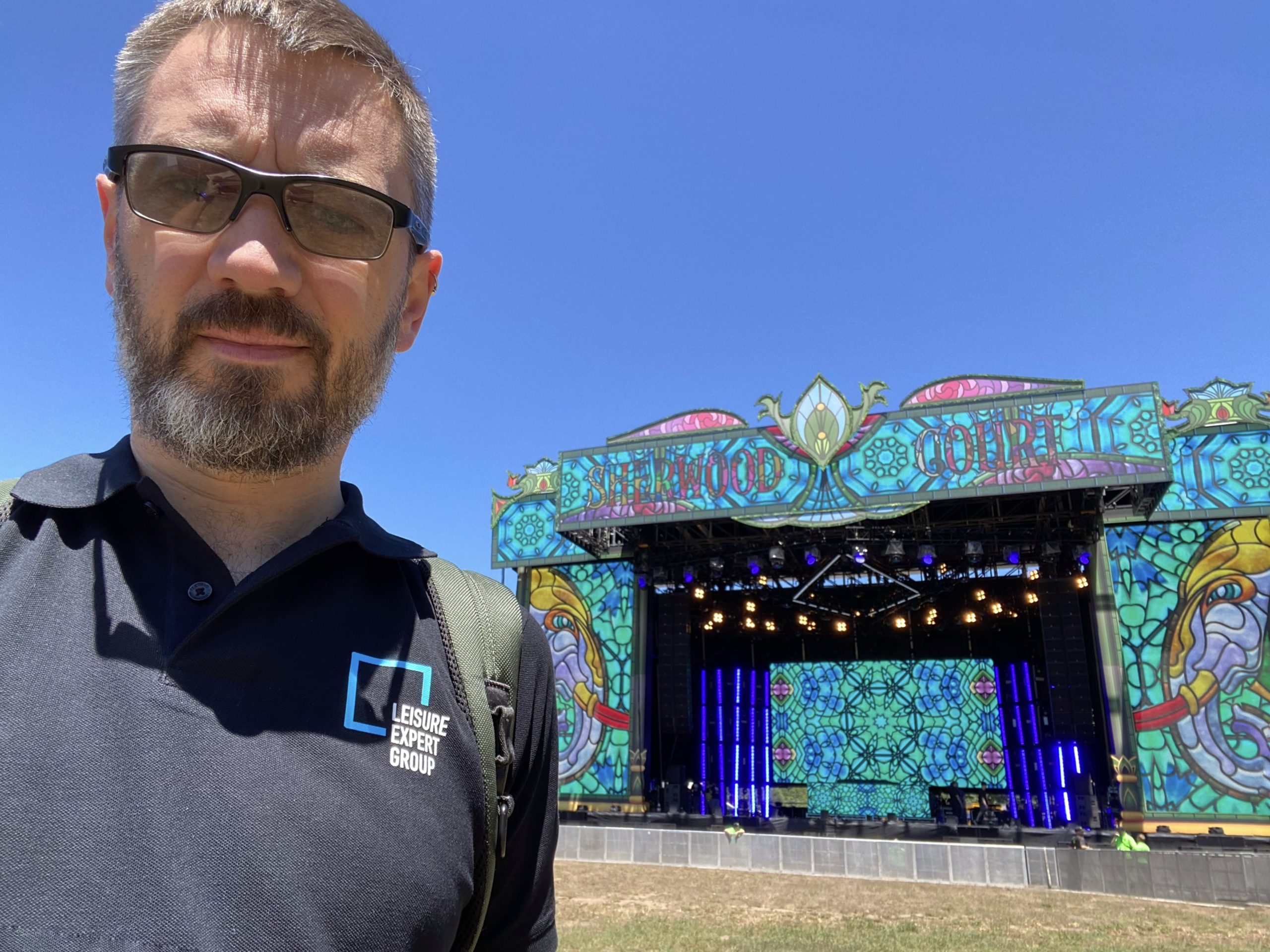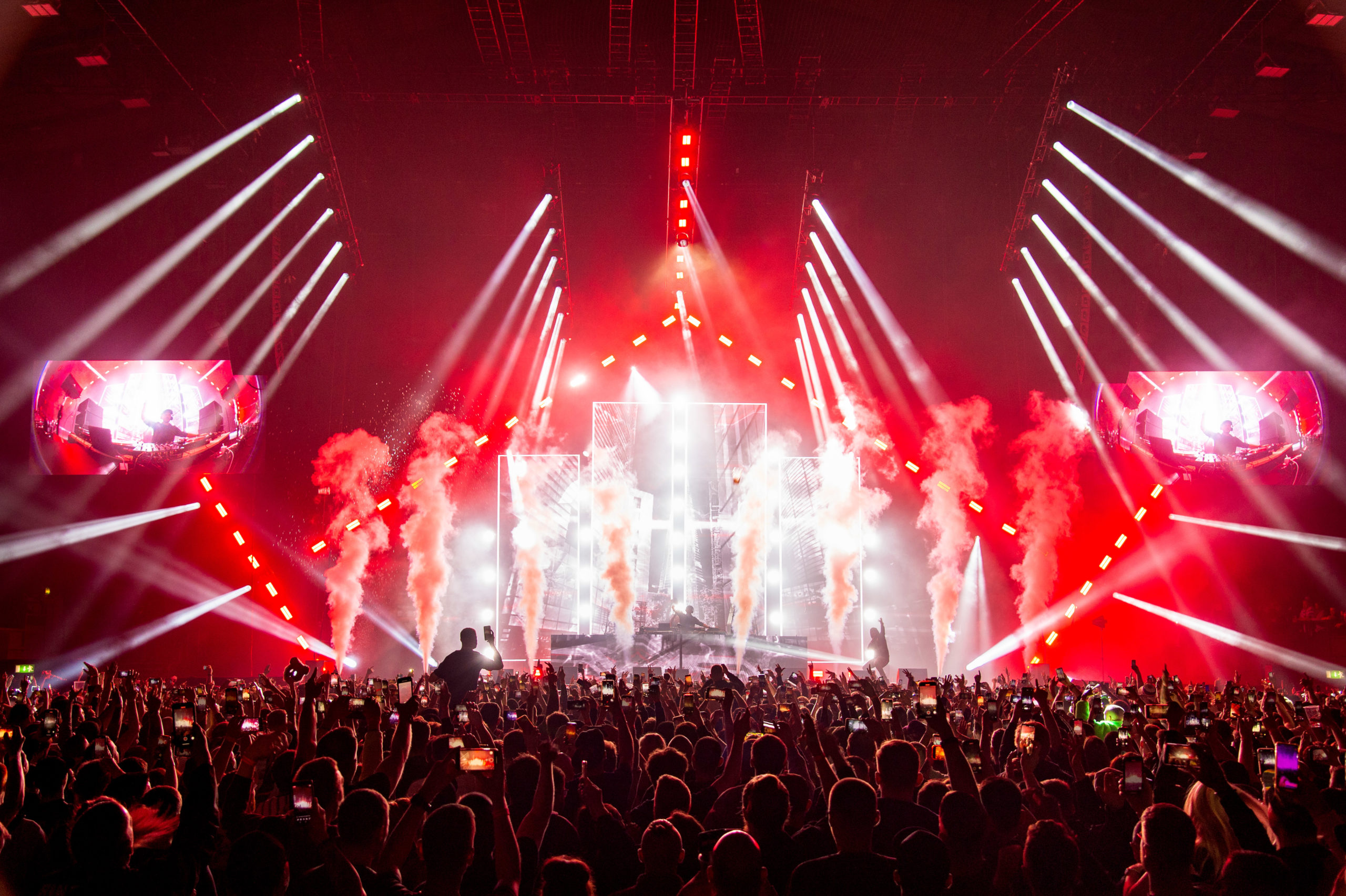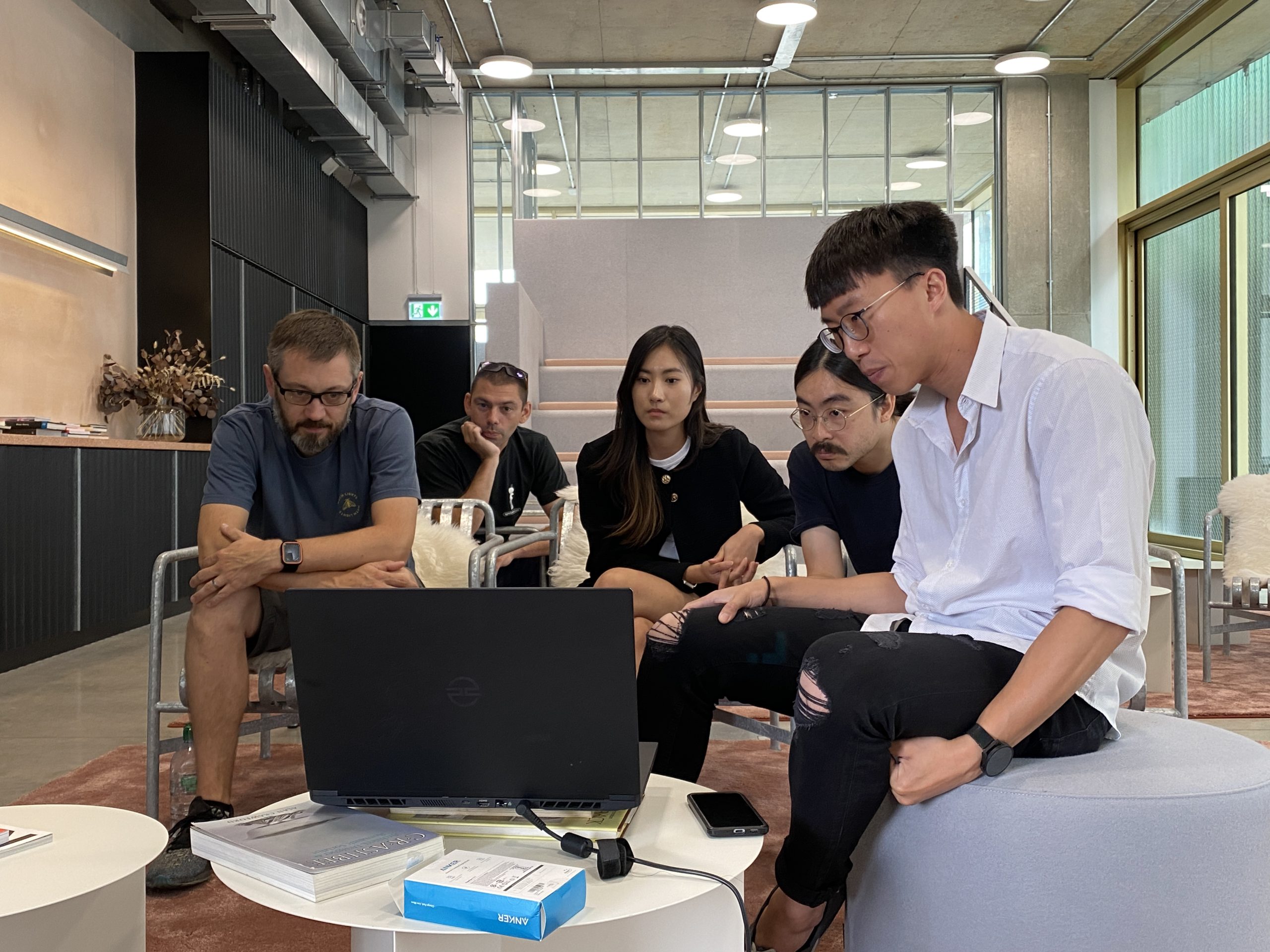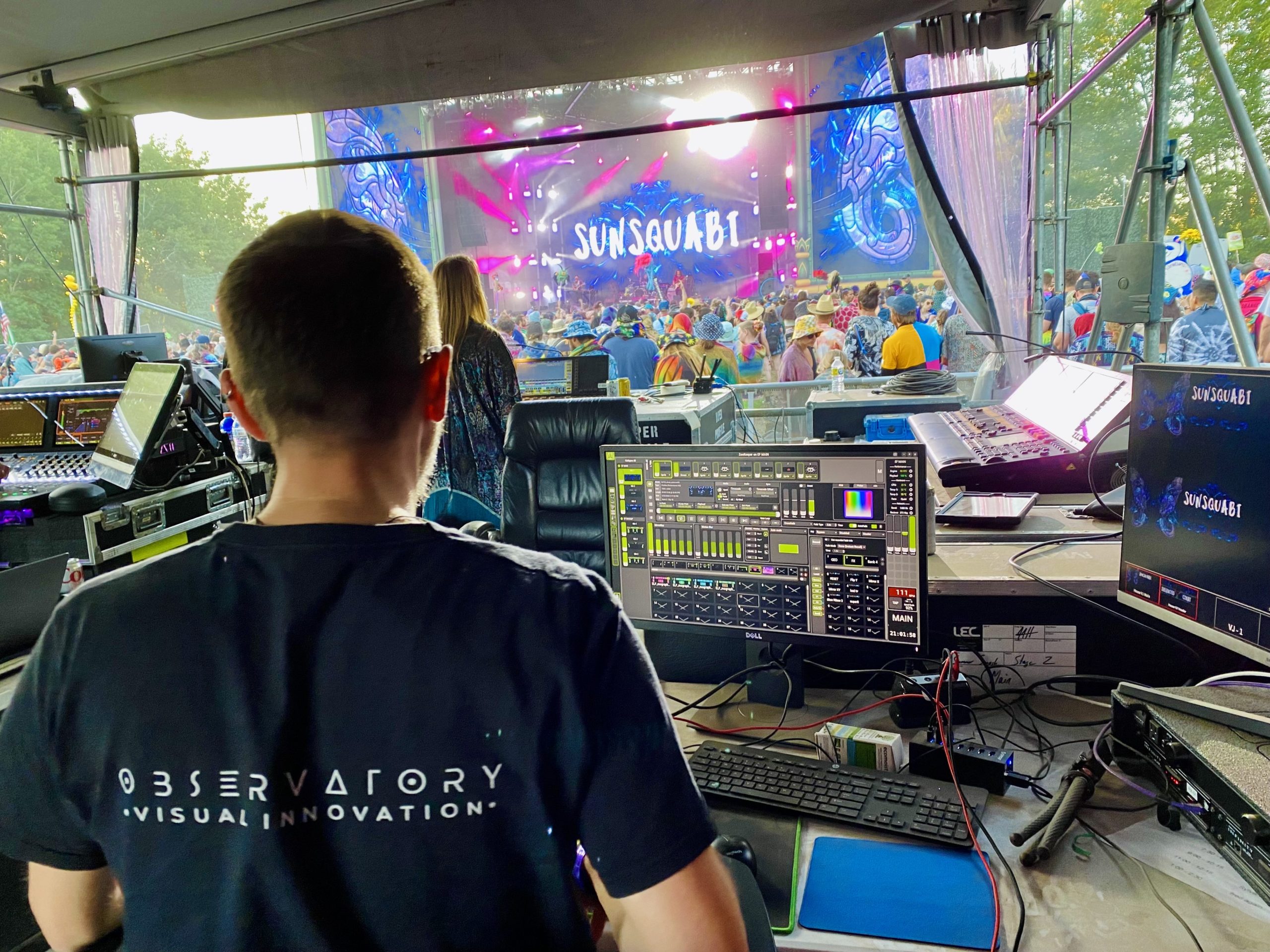“Be patient in finding the right people as they always make a difference“
Interview with Simon Harris, Director of Production at Observatory
Observatory – Could you tell us about your background and career path? How did you get to the Observatory, and how long have you been in the industry?
Simon – I’ve been in the live events industry since 2007, when a very close friend got me a job at Avolites. I moved to Green Hippo a year later and stayed there for 10 years, first as head of training and then as user experience manager. I then spent three years as Head of Video at Bryte Design before joining Observatory in October 2020.
Ben and I have been close friends for almost 30 years, having grown up in neighbouring towns, attended the same school, and even played in a band during our teenage years. We had been in discussions about working together for many years leading up to my joining the company, but 2020 was the year our stars aligned, and we haven’t looked back since.

Observatory – What is Observatory today? Who are its clients? And what projects would you like to see in its portfolio in the future?
Simon – Observatory is a visual content creation and delivery company with expertise in all different forms of visual technology.
The thing that keeps Observatory active and buoyant in these interesting times is a wealth of different clients across different markets and continents. With a keen interest in technology and finding different places and spaces to display pixels, we work on a diverse range of projects, which comes with many benefits. Our history is in creating VJ graphics for concerts and nightclubs, but the company (formerly LightRhythmVisuals and now Observatory) has diversified into creating visual content for VR, AR, projection mapping, dome projection, and digital marketing campaigns, in addition to our bread and butter of tour visuals and digital scenography.
Observatory – What are your favourite projects you’ve worked on? Why?
Simon – I come from a very musical background, having been trained up to a degree level before changing career paths, so musical projects – tour visuals, VJ graphics and delivering our content to screen on festivals – are probably where I feel most at home.
My favourite project and career highlight was operating video on Andy C’s Wembley All Night show in 2021. Andy is a client I have been working with for over 10 years, but this show felt like the pinnacle of what we’ve been building together, not just in terms of the show but the team we had working on it.
I worked with PixelMappers on the production design, and their involvement along with 80Six, LCR and lighting director Tim Fawkes felt like having the best people on the job for a project that means so much to me, having been an Andy C fan since I was a teenager.

In addition to this, the first major project I worked on after joining Observatory was Dua Lipa’s American Music Awards performance, recorded at the Royal Albert Hall. We created bespoke content for the 10k pixel LED cylinder and projection-mapped content that was projected onto the arches and mushrooms in the ceiling of this incredible venue. For this project, I was screens producer, and once again was surrounded by a dream team of incredibly talented people to achieve such a big task in a relatively short space of time. The reaction to the performance still blows my mind, with over 30 million views online.
Observatory – Creatives are sometimes stuck at the start, unsure of where to begin. Do you have any suggestions or advice on how to overcome it? What questions do you usually ask yourself when starting a new project?
Simon – I’m the least creative person in the company. However, that’s not really my role. I’m here to lead the technical delivery of our projects, and for that, I rely on experience and an amazing network of friends and colleagues, who I can call upon when working through issues and challenges. The aspect I value above all others in our industry is the people you meet who have the common goal of making amazing shows and events and wanting the best for the artist or client and the audience. I’m fortunate to know many extremely talented people who are always on the end of the phone and keen to help when called upon.
Observatory – Do you have any tips for working on and managing projects in the graphic design and live events industries?
Simon – Always have the right people for the job, and be patient in finding the right people as they always make a difference. Live events will regularly ask more of you than you might expect, and having the right team will always trump having the best technology. Having the right people with their preferred choice of technology will always be better than the new shiny thing or fashionable choice.
Observatory – What is your favourite part of this process?
Simon – I’ve always been a people person but also a techy, which is why I fell in love with the industry soon after joining it. It is a technical industry, but it’s the people that make it what it is. I feel lucky to have made so many friends and built a network of clients, I would also call friends, all over the world.
Observatory – What is crucial in managing a creative team?
Simon – Always pick the right person for the job and give people a job that they enjoy. Utilise your team’s strengths above all else and take care of them. If you have a team around you, who you trust and who trust you, this will result in everyone giving their all and regularly going over and above your expectations which will benefit the current project and the potential of the company.

Observatory – What don’t you like about your work?
Simon – Sometimes the hours can be tough, especially within my role, whereby I’m travelling abroad and working long and mostly late hours in a variety of different time zones. This can also be challenging for my family, but they understand what I do and why I do it, and I wouldn’t be able to do it without a very supportive wife!
Observatory – What, in your opinion, is currently accelerating the industry? And how did the pandemic affect it?
Simon – I think the pandemic brought both challenges and strengths for our industry. It gave some people and companies the time to develop their new technology and knowledge, but for freelancers, who our industry is built on and depends upon, it was extremely challenging with such little financial support available.
The pandemic, and to some extent Brexit, have also played a big impact on the development of technology as manufacturers have struggled to obtain the parts they need to build their products. Now that the industry is back and busy, demand has skyrocketed, but the supply chain is struggling to keep up.

For us at Observatory, the acceleration is most visible in the power we are now able to harness in terms of rendering, which comes in two forms: we have recently invested in a render farm so powerful it would have been unthinkable just a few years ago. In addition to this, real-time platforms, such as Unreal, Notch, Touch Designer, and Unity are now able to offer us real-time functionality that would have required days or weeks of rendering just a few years ago. These systems have been around for years, but the quality of their output is now on par with the more traditional rendering applications we are experts in using. We see this as a big part of our future, and for that reason, we have brought in a new recruit to manage our real-time services in terms of rendering and interactivity.
Observatory – Can you think of any significant time steps or historical moments that shaped and changed the industry?
Simon – Aside from the pandemic, which I touched upon in a previous question, I believe that developments in graphics card technology have provided the greatest leaps for companies creating motion graphics in 2D and 3D. Software updates come more regularly but they usually contain smaller developments, so they aren’t as notable in terms of upgrading our capabilities.
Observatory – Could you try to predict some upcoming changes or trends?
Simon – I think real-time is going to be the biggest trend in live entertainment visual content. For years, we have relied on a timecode to synchronise video playback to performance; however, these new real-time workflows offer an abundance of opportunities. Some musical acts don’t want to be restricted by timecode because they want to jam or improvise. In addition, real-time software offers exciting opportunities for synchronising music with video for dance music and DJs. At Observatory, we want to push these new technological opportunities, and we are fortunate to have some ideally situated clients who we will work with to do so.
Observatory – Are you self-critical? And is it essential for creatives to be so?
Simon – I think it’s always important for you to critique your own work. Evaluating what you did and how you could do it better is imperative to developing your skills and your career. I believe that video content is the most challenging area of live events as it is so subjective. Everyone looks at pixels every day, so everyone has an opinion. It can sometimes be very disheartening when you have made something that you feel is great but your client does not. At the end of the day, it’s the client who needs to be happy, so we have to be ready and willing to make changes that we don’t necessarily believe in and find other opportunities to express ourselves where we can.
Observatory – What are your long-term career plans?
Simon – Having been in the industry for 15 years, my long-term career plans have changed, especially now that I am a parent, which of course changes your priorities. We are fortunate to have built a highly skilled and driven team here at Observatory, so it’s a case of keeping the company busy with interesting and exciting projects and allowing the guys to express themselves with the tasks they are given. The amazing content they deliver time and time again makes me very proud to be part of the team, so I take on the responsibility of keeping them busy with different opportunities to show their skills.
GET IN TOUCH
Address
Observatory Creative Ltd.
design district, Building A2,
London, se10 0BJ